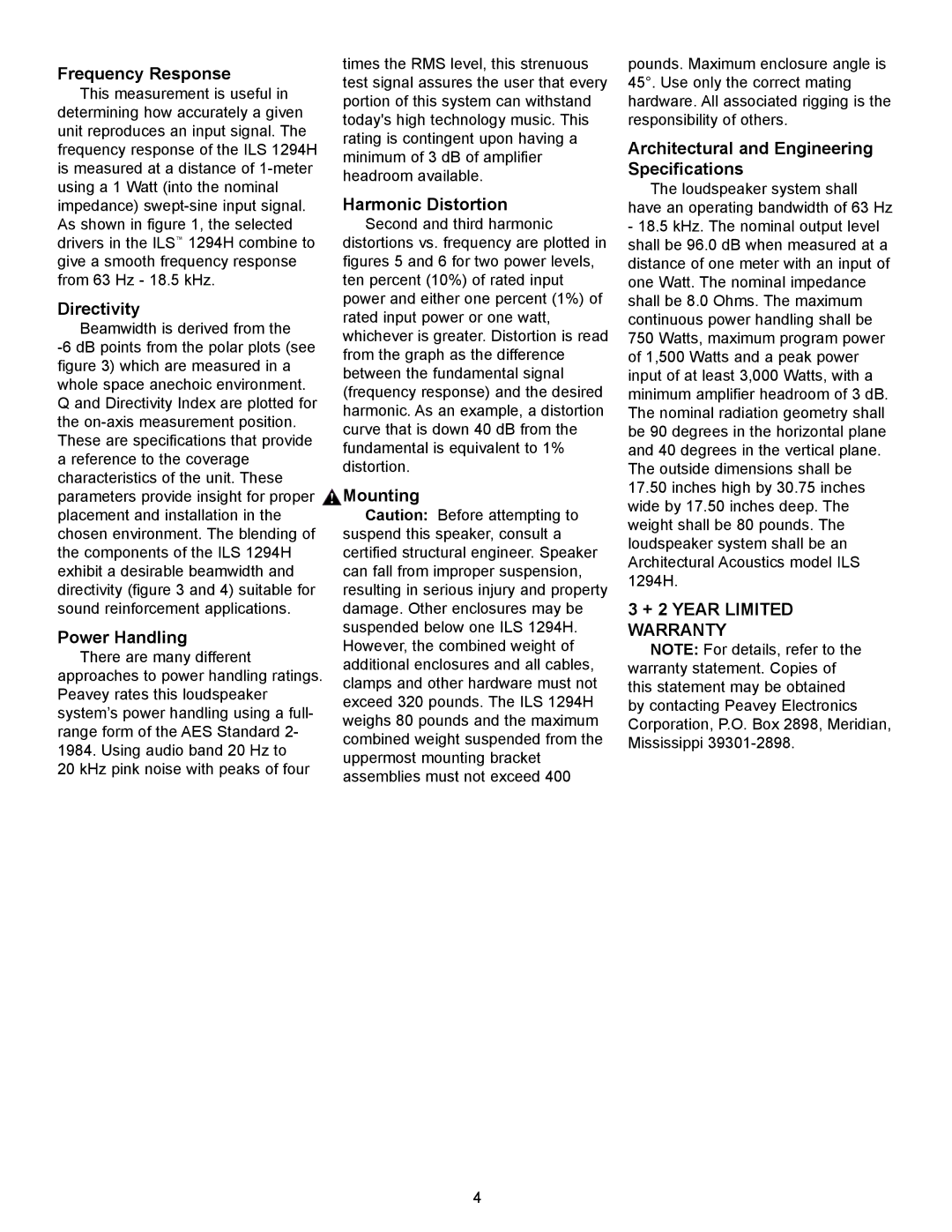ILS 1294 H specifications
The Peavey ILS 1294 H is a renowned loudspeaker that exemplifies Peavey Electronics' commitment to delivering formidable sound reinforcement solutions. This speaker is part of the Peavey ILS (Integrated Loudspeaker System) series, known for their innovative design and exceptional sound quality.One of the standout features of the ILS 1294 H is its powerful 12-inch woofer, designed to deliver robust low frequencies while maintaining clarity. The speaker leverages a high-efficiency compression driver, which ensures that high-frequency sounds are articulated with precision, providing a balanced audio experience across a wide frequency range. This combination of components allows the ILS 1294 H to perform effectively in various settings, from small venues to larger concert halls.
The ILS 1294 H utilizes Peavey's proprietary technologies, including their exclusive phase plug design. This technology enhances the speaker's dispersion characteristics, allowing for a broader sound field without compromising on sound quality. The speaker is engineered to reduce distortion and provide consistent sound levels, making it ideal for both live sound applications and installations.
In terms of build quality, the ILS 1294 H is housed in a rugged, durable enclosure that can endure the rigors of touring or permanent installation. The cabinet is designed not just for aesthetic appeal but also for optimal acoustic performance. Its careful construction minimizes unwanted vibrations, ensuring that the sound reproduction remains true to the source material.
Additionally, the ILS 1294 H features dual inputs for flexibility in setup, making it suitable for a variety of configurations. Whether being used as part of a larger PA system or in standalone applications, it offers versatility that appeals to sound engineers and musicians alike.
Furthermore, the speaker’s sensitivity rating is impressive, allowing it to deliver powerful sound outputs even at lower power levels. This efficiency means that users can achieve optimal sound without the need for excessive amplification, thus ensuring reliability and performance across different scenarios.
In summary, the Peavey ILS 1294 H is a powerful loudspeaker that combines innovative technology with robust design. Its high-quality components, superior sound dispersion, and durable construction make it an excellent choice for both professional and casual audio applications. Whether for live performances, events, or installations, the ILS 1294 H continues to stand out as a leader in the loudspeaker market, providing sound that is both impactful and clear.
